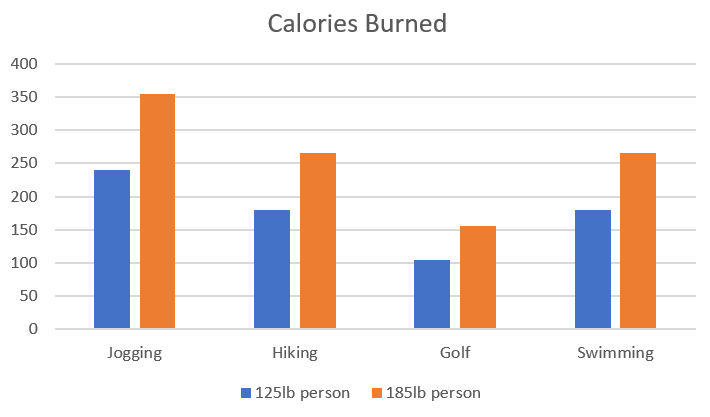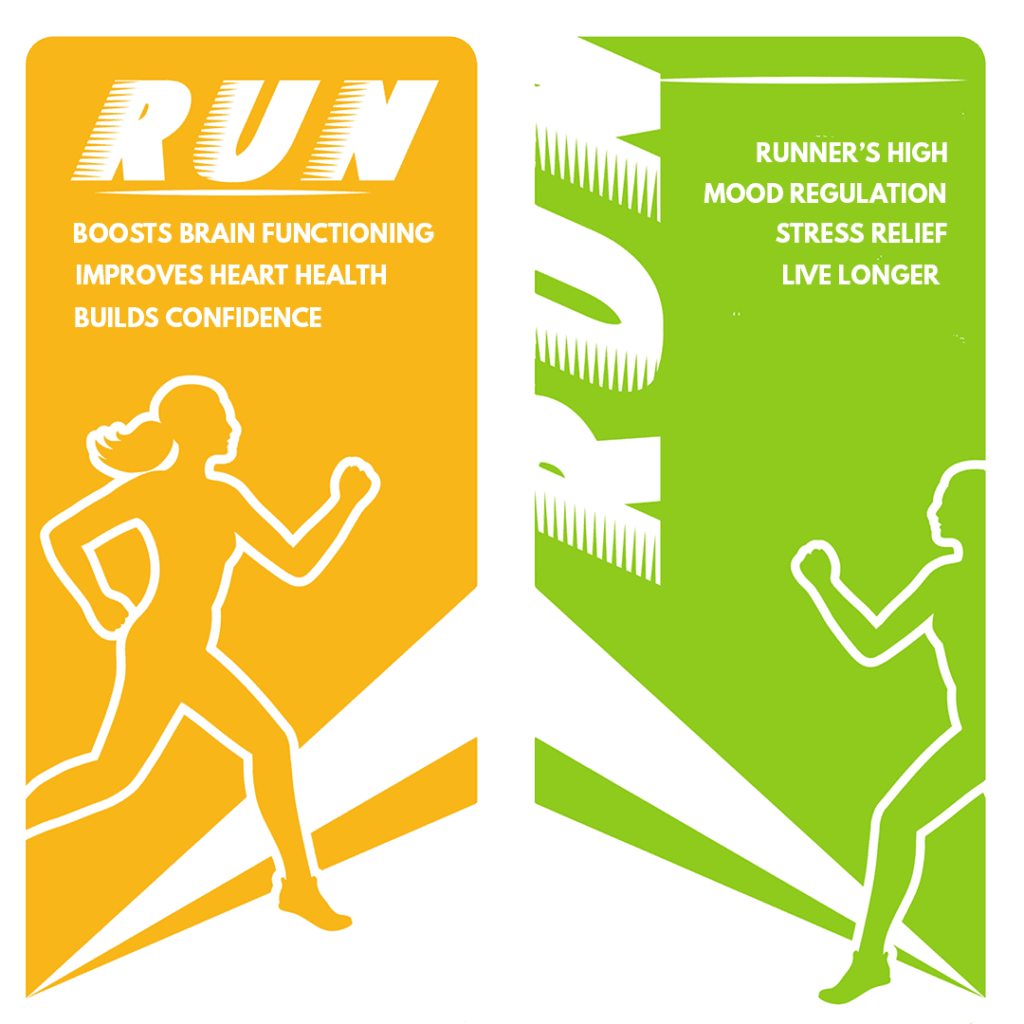Why We Love Jogging and How You Can Too
If you're overweight or over 50, this is especially for you.
Staying active as you get older is critical to staying happy and healthy. Meet the exercise that's free and set to change your life – Jogging! With less than an hour a week, you can lose weight, boost heart health, improve bone density, reduce inflammation, catch-up with friends, and so much more. Just five to 10 minutes a day, even at slow speeds, “is associated with markedly reduced risks of death from all causes and cardiovascular disease,” according to a 2014 study in the Journal of the American College of Cardiology.
“Like many people over 50, I was worried because I thought running, or even strenuous walking, can hurt our joints. Research shows, however, that it won’t if done right.”
Barbara Hannah Grufferman, ambassador for health for the National Osteoporosis Foundation, started running after the age of 50.
Make jogging a regular part of your lifestyle and you’ll be feeling stronger and healthier in no time. If you’re not ready to lace up your running shoes just yet, keep reading.
Nicky is a passionate runner with over 100 marathons and ultra-marathons under her belt. She is also the co-founder of Flanci Active Wear.
Save 15% on Funky Fitness Leggings at https://www.flanciactivewear.co.uk/
Use code: cbdrun
Save $10 on Cooling Muscle Salve https://www.yournaturalhealthcare.com/cooling10
Use code: cooling10
What’s all the hype about jogging and running?
Jogging is simple, it’s highly addictive, and it packs a big punch! It can be done anytime, anywhere, and on any budget. Every jog can be different from speed, to hills, to location, to duration – you can customize it to fit your goals as your priorities shift over time. Whether you want to jog longer, to burn more calories, or step up the intensity for the positive hormonal response and increased metabolic rate (how many calories you burn at rest), it’s a choose your own adventure! Here are just a few of the benefits you can expect.
A full body exercise: Requiring core stabilization, lower body strength, hip flexibility, and upper body for balance, jogging at just 5 mph (a 12-minute mile) for 30 minutes scorches more calories than most other low-intensity exercise options.

Runner’s high: That euphoric feeling that makes you want to run like a child again. In addition to the endorphins, research has shown that endocannabinoids – chemicals in your body that promote relaxation – start kicking in at 30 minutes of easy jogging.And, an added bonus,morning endorphins energize you for the entire day!
Improved heart health: Jogging ups your VO2 max, the maximum amount of oxygen you can utilize during exercise – which is generally considered the best indicator of cardiovascular fitness. If you’re a fitness beginner, improvements to your VO2 max will come relatively easily. By nine months of regular exercise you should see about a 25% increase in your VO2 max which means you can jog about 20% farther in the same amount of time.
Stress relief: Jogging is a powerful antidote to stress. Princeton University research found that jogging produces new neurons in the hippocampus, the region of the brain that regulates anxiety. “Stress activates your fight-or-flight response, which primes your body for action, causing your breathing and heart rate to rise,” explains neuroscientist Ben Martynoga. “When you go for a run, it puts that energy to good use, often helping stress to melt away.” Not to mention that jogging outdoors connects you with nature and disconnects you from the computer. In the hectic bustle of daily life, jogging will become your oasis of peace.
Mood regulation: “Aerobic exercise activates an enzyme in your muscles that clears a substance called knyurenine from your bloodstream,” says Martynoga. “This is great, because a build-up of knyurenine in the brain has been linked to stress-induced depression.” As each foot strikes the ground, you can enhance the mood boosting effect by repeating your chosen mantra to the rhythm of your stride.

Build confidence: There is something about jogging that transforms you mentally as much as it does physically. It can be difficult to get going and we all have days when we can’t be bothered. Your first jog is always the hardest, but once you are out there, chances are you will stay moving for 20 minute. Whenever you do manage to get out the front door, you’ll likely never regret it. Every step, you beat that little negative voice that insists you to stop, and over time, you’ll know you can beat anything. Jogginggives you the opportunity to overcome your doubts, crush negativity, set and achieve new goals, and realize that you’re stronger than you ever imagined.
Boost brain functioning: Jogging has been known to get the creative juices flowing. A2018 study by West Michigan University showed that just 30 minutes of high-intensity jogging at a fairly improves your “cortical flicker frequency” threshold, which is associated with your brain’s ability to absorb and process information. In a set of experiments by Nottingham Trent University in 2016, “executive functions” – those that control your attention, tune out distractions, switch between tasks and solve problems – were improved following bursts of high-intensity interval sprints.
Live longer: The comprehensive, 30-year City Heart Study (started in 1976 with 20,000 men and women ages 20 to 93) found that a regular jogging routine increases the life expectancy of men by 6.2 years and women by 5.6 years. And that longer life, it will likely feel more fulfilling, due to all of the previously mentioned benefits!
Save some cash: If you maintain your exercise program long term, your bank account may also beef up a bit. One study revealed that older people who exercised five days a week for at least 30 minutes saved, on average, $2,500 a year in medical costs for heart-related health problems alone!
The benefits of jogging are plentiful and you don’t need to sprint or even run at a fast pace. The goal is to simply keep your heart rate up. “You should aim to feel a little breathless, but not very breathless,” says Peter Schnohr, chief cardiologist of the Copenhagen City Heart Study. In fact, a slow and steady start is better for your body, giving it time to adapt to the new style of movement.
Fall in love with jogging and its benefits.
With a few tips and tricks it is possible to fall in love with the sport. For whatever reason, we all want to blast out of the gate running (pun intended). We have this picture in our heads about what it and we “should look like”…and nine out of ten times, it’s dead wrong! Trying to do too much too soon will, inevitably, lead to injury and/or burnout.
“Even if your run is more of a power walk, or a stop start shuffle, it doesn’t matter. Think like an athlete, behave like an athlete, and soon enough you will feel like an athlete.”
Julie Creffield, Too Fat To Run founder and author of The Fat Girls Guide to Marathon Running
When it comes to being a first-time jogger, your workout may not, initially, involve actually jogging. Yes, you read that right — you start with walking. In particular, if you have aching joints, prior injuries, or are carrying extra weight, it’s vital that you increase intensity slowly. This will lessen the “shock” to your body, allowing the muscles and joints to become “supple” enough to cope with the increased load and avoid inadvertently causing any repetitive injury.
“Consider starting with a walking program in order to help the bones, ligaments, tendons and muscles adjust and strengthen for exercise.”
Michelle Bird We Run coach
Start off with walking briskly for 5 or 10 minutes – consistency is key! Walk a little bit each day to acclimate your body to the activity and gradually work up to a continuous forward motion for 20 minutes before you add in jogging. Set realistic goals based on your current fitness level, no matter what your starting point.
Embrace the run/walk strategy. Once you’ve conditioned your body by walking daily, you can add in jogging with the Run/Walk Strategy to safely and comfortably build your endurance.
- As always, warm-up with a 10-minute brisk walk.
- Run easily for 1 minute – if, after 1 minute, you are really out of breath, reduce this interval by 15 seconds until you can comfortably talk at the end of the shorter interval.
- Walk with “a purpose” for 2 minutes – it’s an active rest, not a break
- Repeat this cycle for 15 to 20 minutes
- Finish with your regular 5-minute walk cool-down.
As the 1-minute run becomes easier, dial up your intervals by increasing the jog time and/or decreasing the walk time. Some people aim cut out the walk “breaks,” while others (including some marathoners) decide to stick with run/walk as a long-term strategy, using intervals such as jog 3 minutes/walk 1 minute or jog 2 minutes/walk 30 seconds. Grufferman notes that this strategy works and the “reason is simple: it calls for slow, gentle running, with scheduled walk breaks.”
Respect your body while building up to jogging.
There will inevitably be days when you aren’t up for the jog. It is important to listen to your body and recognize not every jog is going to go as planned. Don’t burn yourself out trying to achieve all of your goals at once. Hold back some of your enthusiasm – it will keep you going for much longer, if you don’t spend it all the first week. Casual joggers and seasoned runners alike get wrapped up in hitting certain paces or distances, that they become wildly frustrated when they can’t reach or stay at those levels. So much so, that they often begin to resent it all together. Here are some tips to enjoy the journey and relish in the experiences that come with each jog.
“Even experienced, elite athletes have their ‘off’ workouts,” reveals Lisa Reichmann and Julie Sapper, certified coaches and co-founders of Run Farther and Faster. “Look at every run as a learning experience; even if it wasn’t a perfect run that left you on a runner’s high, what is the take-away?”
Catch your breath. As your heart rate increases, you breathe faster to take in more oxygen. For the beginner, these fast breaths are often very shallow,and don’t provide enough oxygen. “If you’re struggling for breath, slowing down to a walk makes perfect sense,” says Creffield. “I promote something called The 60 Second Rule, which means you can walk whenever you like, as long as you start jogging again after 60 seconds.” Take deeper belly breaths and then do a big exhale. This clears out CO2 and makes room for the oxygen. When you’re back to jogging, try to time your breathing in rhythm with your steps. Inhale for three steps, then exhale for two. This will help you develop good breathing technique as you build endurance. If, at any point, your breathing struggles seem severe, take a break and talk to your doctor.
Go off the beaten path. “Try and steer clear of road running, in favour of grass or track running,” says Michael Fatica, lead osteopath at The Mayfair Clinic. “When you get tired whilst running, your technique tends to deteriorate and a greater striking force (pounding of the foot to the ground) is the result. Softer surfaces are much better at absorbing and reducing this impact.” Do a bit of experimentation to discover the terrain you enjoy.
Take the scenic route. Make jogging a chance to explore. Pick a route along the ocean to listen to the waves crash against the shore or view the budding colors of spring in the forest. Take an early jog to watch the sunrise or through a picturesque neighborhood to appreciate the architecture. A beautiful sight busts up ennui and replaces it with feelings of challenge, excitement, and wonder. Not to mention the additional benefits of cultivating a love of the outdoors and increasing your Vitamin D.
REST! It is critical that you build in rest days. Overtraining is a direct ticket to a myriad of injuries. The impact of every step places the force of your entire weight on your joints and feet, especially with age or those extra pounds you are looking to shed. Your body needs time to heal and build itself up. Be sure to stop immediately when things start to hurt. Whether it’s the dull ache of joint pain or a shooting pain in your lower legs – known as shin splints – trying to work through pain will worsen the issue and lead to more serious injury. Check with your doctor if pain continues after rest to check for any serious conditions.
Mix it up. As you build up stamina, alternate jogging days with power walk days.“On the days you aren’t jogging, doing some gentle stretching of your buttocks, the front of your thigh and hip, the back of your thigh, and your calves is essential,” says Fatica. Cross-training with low-impact activity like gentle yoga sessions and light walks are great ways to get some movement while staying injury-free, which is important because it’s hard to love jogging when you can’t jog.
“Novelty prevents boredom and feeds your brain stimuli, which stops distractions and promotes positive thoughts.”
Dr Je Brown, chief psychologist for the Boston Marathon
Celebrate your jogging achievements!
When you’ve been pondering jogging for awhile, it’s often because you’ve seen others out there striding along gracefully and you want that freedom. So when you don’t feel amazing right out of the gate or aren’t as fast as you want to be, you are likely to spend way too much mental effort focusing on what you aren’t.
Just as gratitude is a powerful antidote against taking your partner for granted, being grateful serves the same purpose when it comes to jogging. Your intentions and mindset are what will help you find and grow your love for jogging, even on the days when your workout or results are less than ideal.
After each jog, take some time to appreciate the power and strength coursing through your body. “Remember the amazing days; that helps because those days always come back,” concludes Wallor. “No matter how your day went, if you got that run in today, you were successful.”
“Ultimately, you'll be doing laps of all those Sliding Doors versions of yourself still sat on the couch.”
Julie Creffield
Sources:
https://www.nextavenue.org/6-reasons-learn-love-jogging/
https://www.verywellfit.com/running-tips-for-overweight-runners-4142348
https://www.womenshealthmag.com/uk/fitness/running/a709119/how-to-start-running-when-youre-overweight/
https://www.womenshealthmag.com/uk/fitness/running/a709100/how-to-run-properly/https://www.runtothefinish.com/fall-in-love-with-running/
https://www.womenshealthmag.com/uk/fitness/running/a708998/benefits-of-running/
https://www.nextavenue.org/6-reasons-learn-love-jogging/
Stay connected for free resources to expand your health and vitality with non-allopathic remedies and natural CBD solutions.

